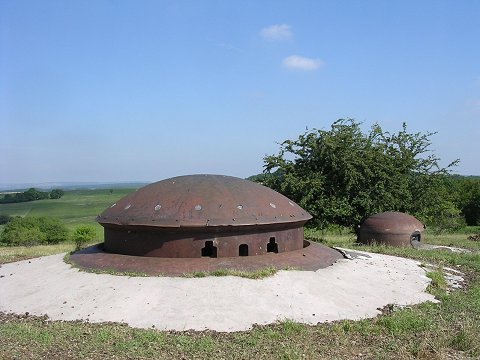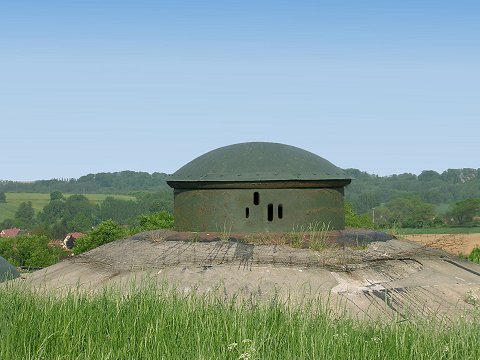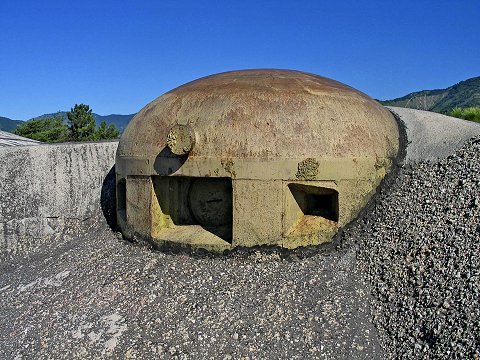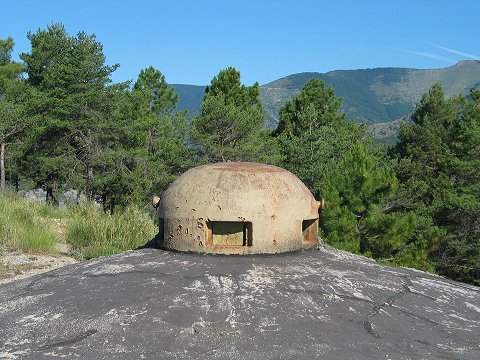Fortress Europe
 [Image: A turret on the Maginot Line].
[Image: A turret on the Maginot Line]."As I have said many times before," Paul Virilio states in an old interview with CTheory, "I was among the first people to experience the German Occupation of France during the Second World War. I was 7-13 years old during the War and did not really internalise its significance."
 [Image: The Maginot Line].
[Image: The Maginot Line]."More specifically," Virilio continues, "under the Occupation, we in Nantes were denied access to the coast of the Atlantic Ocean. It was therefore not until after the War was over that I saw the sea for the first time, in the vicinity of St. Nazaire. It was there that I discovered the bunkers."

 [Images: The Maginot Line – and, yes, I am aware that these are not the bunkers at St. Nazaire that Virilio just mentioned].
[Images: The Maginot Line – and, yes, I am aware that these are not the bunkers at St. Nazaire that Virilio just mentioned]."But what I also discovered was that, during the War, the whole of Europe had become a fortress. And thus I saw to what extent an immense territory, a whole continent, had effectively been reorganised into one city..."
War, in Virilio's formulation, was thus a kind of terrestrial reorganization – a reshaping of the Earth's surface; it was, among other things, landscape architecture pursued by other means.
 [Image: The Maginot Line].
[Image: The Maginot Line].(Thanks, Scott! Earlier on BLDGBLOG: Bunker Archaeology).





Comments are moderated.
If it's not spam, it will appear here shortly!
Just found your blog a couple days ago and love it! Keep up the great work.
I also love the Virilio I've read (the War and Cinema book) and find this idea very interesting. I wonder if he makes this case for WW2-era Europe-as-City specifically related to new warfare (and the idea of Total War) to differentiate it from, say, the Middle Ages when isolated castles and fortresses spread liberally around the Continent make for more of a City-State kind of network than a centralization, unification or condensation. Then again, wasn't the Maginot Line both fairly unique in Europe as well as essentially outdated by the time the Germans invaded?
Not the same Daniel as the gent above :)
I was visiting friends in Etretat on the Normandie coast last year and I was surprised to see how many German bunkers were still there. Etretat is apparently one of the oldest seaside resorts in France with beautiful white cliffs, lovely beach and the rest of it, so it was weird to see those drab hulks of concrete sprinkled all over the place
It turns out the bunkers are built really well and they are super-difficult to demolish... In effect they have become unloved monuments to German engineering out there on the eroding coastline
Also, I find it interesting how the French seem to have gone for tubular and spherical shapes for their bunkers on the Maginot line, while the Germans favoured much more angular and 'stepped' shapes. Anybody know why?
Great blog by the way!
when can we expect "homo-fortress" - what a success I'd have been in Nazi marketing!
anyway, homo-fortress, will probably be a giant wall encircling all the "major" land masses on this here old planet...
land-masses will, un-naturally, compete as to biggest and most elaborate, to the extent that buildings will end up playing 2nd fiddle to the walls in architect circles...
also, it's claimed that the great wall of china can be viewed from space (?)
if enough people came together in a large mass - would they also be visible?
just to back up the validity of my lack of argument:
http://en.wikipedia.org/wiki/Great_Wall_of_China#Visibility
Re: homo-fortress continent wall enclosures: Virilio talks about "fortress Europe" "a fortress without a roof, since the Allies had air supremacy." But he contrasts this as an outmoded model after Kosovo war, an all-air war with new kinds of "information bombs" that fry telecommunications. I'm not sure if Virilio talks about it but it seems biological warfare would be another kind of info. bomb. More generally he's saying war turf is no longer spatial but temporal - TV & nets are warzones. The visibility of the bunkers and homo-fortress type bomb shelters, and the aural force of the sound barrier-breaking bunker buster bombs, become old fashioned with the silent & instantaneous info. bomb type warfare. Homo-fortress becomes anachronism and ruin.
Cold War suburban fallout shelters are a strange equivalent to these ruins of WWII bunkers. Some US home shelters must still be sealed as time capsules, stocked with dusty canned beef and radiation detection kits...
I like Virilio's attention to the inevitable accidents of war technologies - "The atomic bomb provoked a specific accident. But the information bomb gives rise to the integral and globally constituted accident." Blackberries, iPods, GM food et al. are our bunkers... poised for accidents, yearning malfunction.
As a side note, I'd love to live in one of those bunkers for a year or two. I bet they have great acoustics & bucolic views! BLDGBLOG could acid etch archives on the inner walls, set up a few office cots and get to work dreaming.
What?? Blogging about a fort that's not for sale?? (lol)
That reminds me of a contribution to the recent Rotterdam Architecture Biennale 2007 by Lieven de Cauter and Michiel Dehaene called "Meditations on Razorwire".
They picked up the topic of the "political equator" and analyzed the bordercrossings along this line (Tichuana, Melilla in North Africa, the european Shengen border and the West bank barrier, a.o.) Us Europeans could re- activate the Maginot Line and it's facilities in order to create a second line of defense against all those africans. But don't tell Sarkozy- he might pick up on that.
Post a Comment